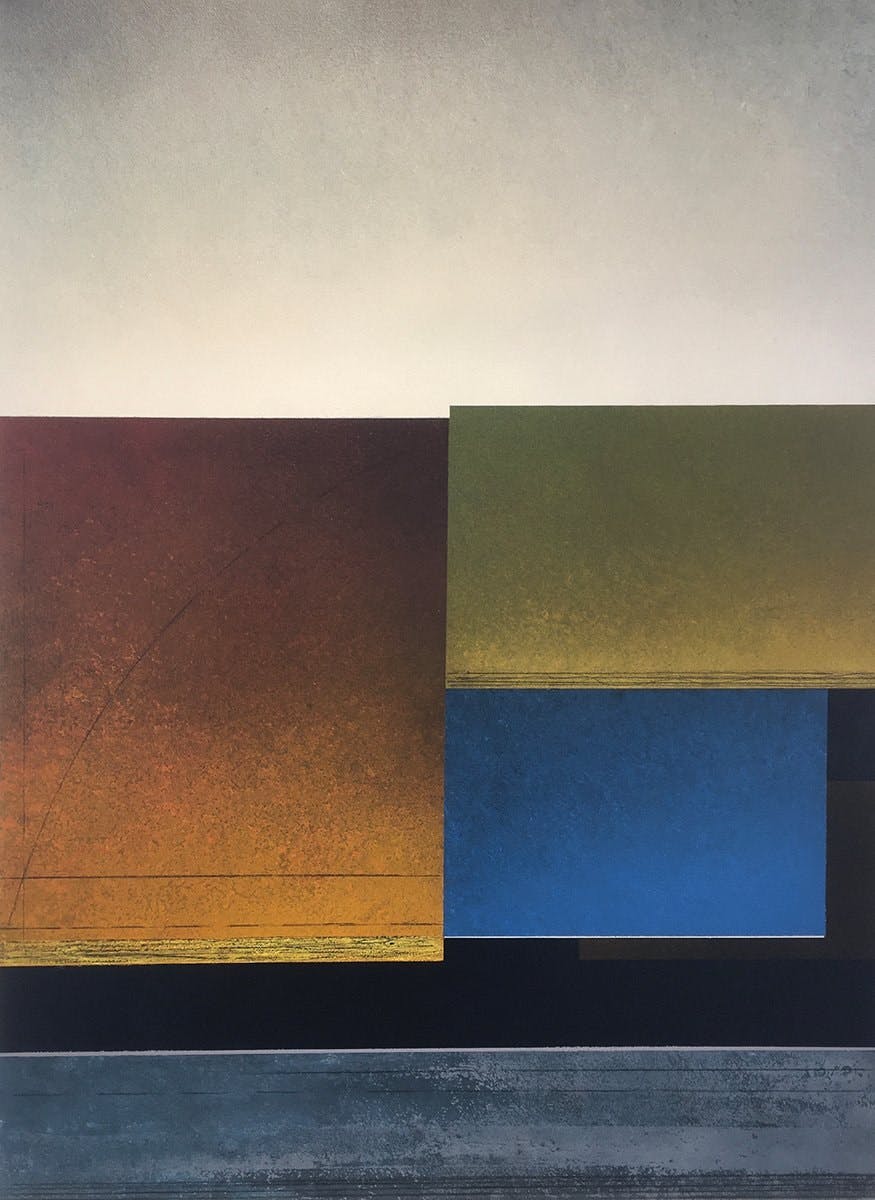
Canvas 4, 2022, acrylic on canvas, 1210 x 915mm
Photo Credit

Paper 4, 2022, acrylic on archival paper, 860 x 660mm
Photo Credit

Canvas 4, 2022, acrylic on canvas, 1210 x 915mm
Photo Credit

Paper 4, 2022, acrylic on archival paper, 860 x 660mm
Photo Credit
There is an intersection where realistic landscape painting and abstraction meet and exchange ideas, one tells us in a literal way (realism) what we are seeing, the other (abstraction) invites us to imagine what we are seeing given a set of cues that can invoke perhaps a ‘landscape’ reading of the work. All of this has its parallels in music. These paintings, one could say, have a ‘musical’ feel to them, a rhythm, light and shade, arioso to capriccio.
Richard Adams has two strings to his bow. An artist who looks outwards for his painterly cues, and a musician (violinist with Nairobi Trio) who looks inwards for his music. This is conjecture of course, but talking to him one becomes aware of how one informs the other. There are two parts to this artist – painting that is in some way musical, and music that in some way painterly.
The act of creation, whichever art practice we happen to work within, is initially a solitary practice, but then, either by performing or by hanging the work on the wall, there comes the time of exposure, the reveal, the performance. Richard Adams has exhibited in New Zealand, London, Tokyo, and France and plays continuously throughout New Zealand and overseas.
Goat Island or Te Hawere-a-Maki, the marine reserve, is close to Richard’s studio. Are these a painterly response? Perhaps it is as the painter Brett Whitely said, “I’m not going to talk to you about my paintings, just look at them if you want to know about them”.
Orexart is very pleased to show these new paintings by Richard Adams. Take your time to ‘know about them’.
There is an intersection where realistic landscape painting and abstraction meet and exchange ideas, one tells us in a literal way (realism) what we are seeing, the other (abstraction) invites us to imagine what we are seeing given a set of cues that can invoke perhaps a ‘landscape’ reading of the work. All of this has its parallels in music. These paintings, one could say, have a ‘musical’ feel to them, a rhythm, light and shade, arioso to capriccio.
Richard Adams has two strings to his bow. An artist who looks outwards for his painterly cues, and a musician (violinist with Nairobi Trio) who looks inwards for his music. This is conjecture of course, but talking to him one becomes aware of how one informs the other. There are two parts to this artist – painting that is in some way musical, and music that in some way painterly.
The act of creation, whichever art practice we happen to work within, is initially a solitary practice, but then, either by performing or by hanging the work on the wall, there comes the time of exposure, the reveal, the performance. Richard Adams has exhibited in New Zealand, London, Tokyo, and France and plays continuously throughout New Zealand and overseas.
Goat Island or Te Hawere-a-Maki, the marine reserve, is close to Richard’s studio. Are these a painterly response? Perhaps it is as the painter Brett Whitely said, “I’m not going to talk to you about my paintings, just look at them if you want to know about them”.
Orexart is very pleased to show these new paintings by Richard Adams. Take your time to ‘know about them’.